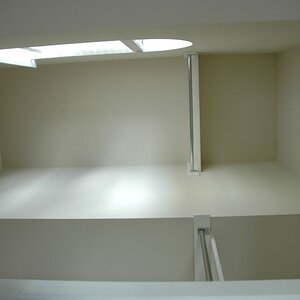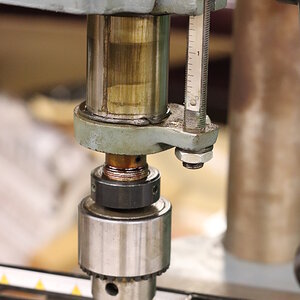Robert_Maxey
TPF Noob!
- Joined
- Dec 27, 2011
- Messages
- 36
- Reaction score
- 5
- Location
- Utah
- Can others edit my Photos
- Photos NOT OK to edit
I posted this elsewhere, but in perusing the part of the site, I thought it might interest a few that avoid my ramblings on parts of the site they never frequent.
Polaroid Process - Vectographs
So what is the Vectograph process? Well, it is a printing process that allows you to create the finest possible printed stereoscopic images. It is a polarized process, so you require special polarized viewing glasses.
A Vectograph is superior by any measurable means, to all other printed stereoscopic image techniques.
Attempts at a color process were tried; the process was called the Stereo-Jet Process. It relied on ink-jet printers and special inks. Costly and not available to the average person.
How do you make one? You probably dont. Sadly, Kodak discontinued matrix film and tanning developers years ago; Polaroid was sold to 3M and 3M stopped making Vectograph film available.
That said, another company now offers Vectograph film and modern ink-jet printers replace the matrix film, so ignore what I just said: you can make them, but you need to kludge your way through the process.
That said, ignore what I said because there are sources for prepared matrices. Costly, yes.
Basically, Vectograph film is a multi-layered material, in which the molecular alignment of the top surface is 90-degrees to the bottom surface. When stained using iodine based Vectograph printing ink, the top and bottom layers become polarizers.
Do not think darker or lighter, think degrees of polarization.
Vectograph film has much in common with all polarizer filters. To make the film, PVA is stretched. Thats it. The stretching aligns the molecules. After stretching, the film is stained and polarizer film is the result.
When viewing a Vectograph without the required glasses, you will see two images: the top one and the bottom one. Or in stereo parlance, the left-eye view and the right-eye view. Because the images are polarized, the left filter of your viewing glasses only sees the left image and the right eye only sees the right image. The brain fuses these images together to provide stereo depth.
To make a print, you first create black and white negatives the same size as the finished print. Then sheets of matrix film are exposed and processed. The end result is two matrices: one for the left eye and one for the right eye.
These matrices are best thought of as rubber stamps in that they transfer the iodine solution to the Vectograph film. The thickness of the raised matrix image corresponds to the lightness or darkness of the negative.
The matrices are first aligned for proper stereo. You simply lay one matrix over the other, align, trim, and place a strip of filler between the edges of the matrices. The thickness of the filler corresponds to the thickness of the Vectograph film. The pair is trimmed and taped.
By changing the alignment, you can move the objects towards, behind, or through the stereo window. The Vectograph film goes between the two matrices, and is passed through a roller, and allowed to set. The iodine solution will permeate (imbibe) the Vectograph film, and create the final stereo image.
The image can be painted with silver paint for prints or not painted for backlit displays.
Polaroid Process - Vectographs
So what is the Vectograph process? Well, it is a printing process that allows you to create the finest possible printed stereoscopic images. It is a polarized process, so you require special polarized viewing glasses.
A Vectograph is superior by any measurable means, to all other printed stereoscopic image techniques.
Attempts at a color process were tried; the process was called the Stereo-Jet Process. It relied on ink-jet printers and special inks. Costly and not available to the average person.
How do you make one? You probably dont. Sadly, Kodak discontinued matrix film and tanning developers years ago; Polaroid was sold to 3M and 3M stopped making Vectograph film available.
That said, another company now offers Vectograph film and modern ink-jet printers replace the matrix film, so ignore what I just said: you can make them, but you need to kludge your way through the process.
That said, ignore what I said because there are sources for prepared matrices. Costly, yes.
Basically, Vectograph film is a multi-layered material, in which the molecular alignment of the top surface is 90-degrees to the bottom surface. When stained using iodine based Vectograph printing ink, the top and bottom layers become polarizers.
Do not think darker or lighter, think degrees of polarization.
Vectograph film has much in common with all polarizer filters. To make the film, PVA is stretched. Thats it. The stretching aligns the molecules. After stretching, the film is stained and polarizer film is the result.
When viewing a Vectograph without the required glasses, you will see two images: the top one and the bottom one. Or in stereo parlance, the left-eye view and the right-eye view. Because the images are polarized, the left filter of your viewing glasses only sees the left image and the right eye only sees the right image. The brain fuses these images together to provide stereo depth.
To make a print, you first create black and white negatives the same size as the finished print. Then sheets of matrix film are exposed and processed. The end result is two matrices: one for the left eye and one for the right eye.
These matrices are best thought of as rubber stamps in that they transfer the iodine solution to the Vectograph film. The thickness of the raised matrix image corresponds to the lightness or darkness of the negative.
The matrices are first aligned for proper stereo. You simply lay one matrix over the other, align, trim, and place a strip of filler between the edges of the matrices. The thickness of the filler corresponds to the thickness of the Vectograph film. The pair is trimmed and taped.
By changing the alignment, you can move the objects towards, behind, or through the stereo window. The Vectograph film goes between the two matrices, and is passed through a roller, and allowed to set. The iodine solution will permeate (imbibe) the Vectograph film, and create the final stereo image.
The image can be painted with silver paint for prints or not painted for backlit displays.





![[No title]](/data/xfmg/thumbnail/41/41890-a5975e67f00dd9340fcf9dba8728a762.jpg?1619739933)

![[No title]](/data/xfmg/thumbnail/41/41892-d6f91fd1c816420825658ffaad56df78.jpg?1619739934)
![[No title]](/data/xfmg/thumbnail/34/34137-37e6e29a844c1214e5b14ce322c7b716.jpg?1619736309)




